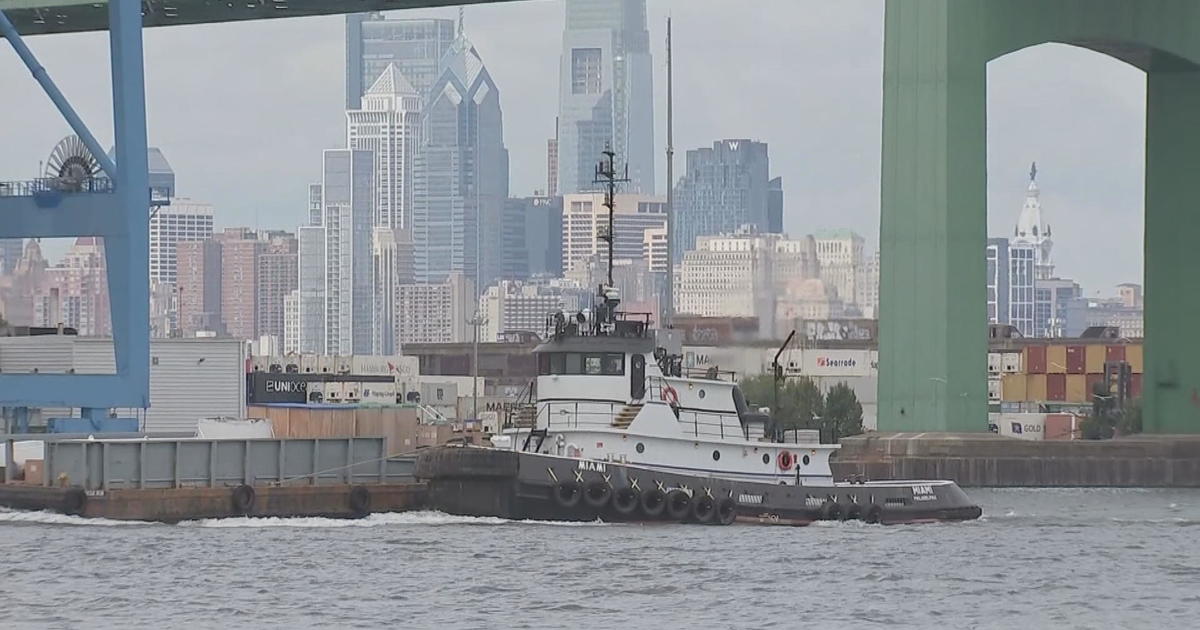The first dockworkers strike at major East and Gulf coast ports in almost half a century could soon mean shortages of bananas and pricier imported cherries at U.S. grocery stores. That’s because both fruits are among the more than 100 categories of food that depend on the now-shuttered operations, with the labor dispute also expected to delay auto shipments.
Just how much American consumers and the U.S. economy will be impacted by the strike’s immediate disruption of ports that handle about half of the country’s trade in cargo containers depends on the duration of the work stoppage, now in its first day.
“Each day that this goes on it creates a backlog of containers and ships,” American Farm Bureau Federation economist Daniel Munch told CBS MoneyWatch. “A 3-to-5-day strike will take two weeks to clear — if it goes into three-week territory, it will be early January before it gets cleared.”
Food products likely to be impacted in the nearer term include seafood, coffee and fruits and vegetables grown outside the U.S. And while retailers that likely stocked up beforehand are buffered against an immediate impact, “at some point bananas are going to expire, frozen seafood is going to defrost,” Munch said.
The strike, depending on its length, is going to felt by consumers and farmers who rely on the impacted ports to export containerized cargos of soybeans and shipments of poultry, said the economist, who urged both sides to work for a resolution.
Within two to three weeks you should start seeing shortages,” Andrew Coggins, a clinical professor of management and management science at Pace University’s Lupin School of Business, told CBS MoneyWatch. “It is a big deal, especially if it lasts for a long time, because so much of what we use on a daily basis has at some point in its life traveled by ship or by water, or at least, some components,” Coggins said.
The impact for U.S. consumers won’t be immediate because companies learned to maintain backup supplies during the pandemic. “Before, there was a heavy reliance on just-in-time logistics. Then, when COVID hit and goods weren’t coming in just-in-time from China and elsewhere, and the longshoremen were sick, it slowed everything down,” he noted.
What products will be affected by the port strike
More than 75% of U.S. bananas arrive at ports handled by the International Longshoremen’s Association, or ILA, according to the farm bureau. Beyond the perishable fruit, nearly 90% of imported cherries, 85% of canned foodstuffs, 82% of hot peppers and 80% of chocolate that arrive via waterborne vessels are offloaded from containers at this ports, Munch noted.
New York Governor Kathy Hochul on Monday warned of possible banana shortages, telling a news conference at Port Authority headquarters: “I do not want to be in a position to say, ‘Yes, we have no bananas,’ but we could get to that point.”
Much of the state’s food supply is shipped by truck or rail from upstate and other states, or Canada and Mexico, and pharmaceuticals are flown in, Hochul said.
The automobile industry could feel a more immediate impact, however, with Hochul cautioning would-be buyers to call ahead.
If you’re expecting a new car this week, it may be something you want to check with your dealer. It may not be arriving, for example, in the next few weeks,” she warned.
Imported beverages also at risk from dock strike
Beverages are also at risk of being in short supply or subject to price increases, with 80% of imported beer, wine, whiskey and scotch, as well as 60% of rum, arriving at East and Gulf coast ports, the farm bureau noted.
Retailers and importers of nonagricultural goods had sped up shipments in anticipation of the strike, and some ships were diverted to West Coast ports where workers are not among those striking.
“Our commodities that we export and Walmart definitely will be impacted,” said Coggins. Some overseas goods might be rerouted to Mexico and sent out by rail or truck, he noted.
The strike could also prove an issue for American farmers and U.S. agricultural exports, leading to an overabundance of American-grown commodities domestically.
“Approximately 14% of all U.S. waterborne agricultural exports, by volume, would be at risk,” wrote Munch. “Over a one-week period, the potential value of disrupted containerized ag exports is estimated at $318 million.”

